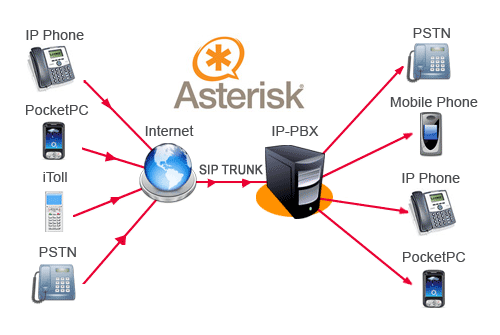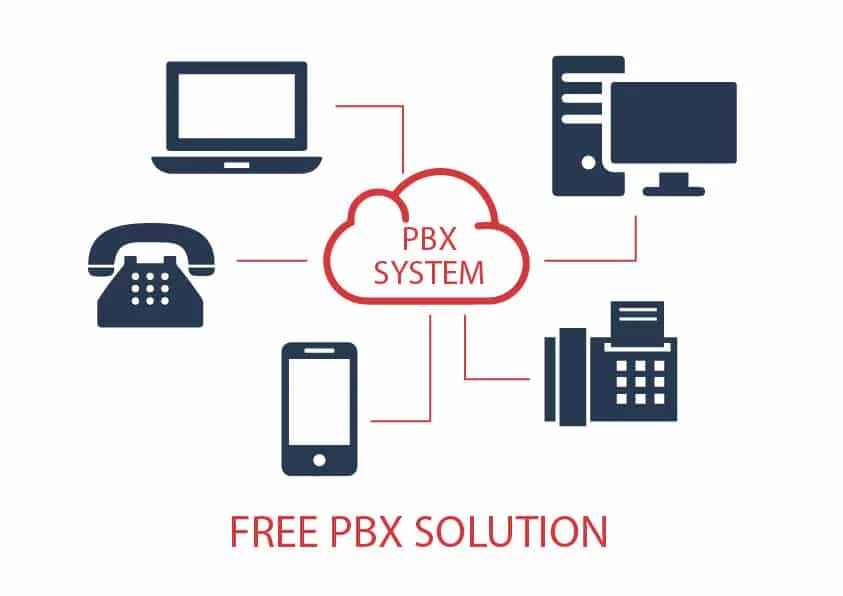Getting Started with FreePBX Harnessing the Potential of Open Source VoIP
In today's interconnected business landscape, effective communication plays a critical role across organizations. Voice over Internet Protocol (VoIP) has revolutionized the way businesses communicate, providing a cost-effective and flexible solution for making and receiving calls over the internet. Open-source software has been instrumental in democratizing VoIP technology, allowing businesses to deploy and personalize their own communication systems. One popular open-source VoIP solution that has gained widespread acclaim is FreePBX. This article delves into the advantages and features of FreePBX, its role in streamlining communication, and its impact on businesses.
I. Understanding VoIP and Open Source:
1.1 VoIP: transforming Communication
Legacy phone systems relying on analog technology imposed limitations on businesses, such as high costs and inflexibility. VoIP technology disrupted the industry by converting voice signals into digital data and transmitting them via the internet. This breakthrough introduced various benefits, including cost reduction, scalability, mobility, and integration with digital systems.
1.2 Open Source: The Power of Collaboration
Open-source software embodies the principles of transparency, collaboration, and accessibility. It allows developers and organizations to access, modify, and distribute the source code of a software application freely. Open-source VoIP solutions offer businesses the opportunity to leverage the collective knowledge and expertise of a global community of developers and users. This collaborative approach fosters innovation, rapid development, and a higher degree of customization.

II. Introduction to FreePBX:
2.1 What is FreePBX?
FreePBX is a web-based graphical user interface (GUI) that simplifies the management and configuration of Asterisk, a widely adopted open-source VoIP framework. It provides a user-friendly platform for businesses to set up and administer their VoIP communication systems without requiring extensive technical expertise. FreePBX integrates various VoIP components, such as call routing, IVR (Interactive Voice Response), voicemail, conferencing, and more, into a unified solution.

2.2 Key Features of FreePBX:
Call Management: FreePBX offers extensive call management capabilities, including call routing, call queuing, call recording, and call monitoring. These features enhance efficiency and ensure effective handling of incoming and outgoing calls.
Interactive Voice Response (IVR): FreePBX enables businesses to create custom IVR menus, allowing callers to navigate through different options and reach the appropriate departments or extensions. IVR streamlines the call flow and improves the overall customer experience.
Conferencing: FreePBX facilitates conference calls with multiple participants, making it easy for teams to collaborate remotely. It supports both ad-hoc and scheduled conferences, providing a seamless communication experience.
Voicemail and Fax-to-Email: FreePBX offers voicemail functionality, allowing users to receive and access voice messages through their email accounts. Additionally, it supports fax-to-email, enabling the reception of faxes as digital files in email inboxes.
Call Detail Records (CDR): FreePBX generates detailed call logs, providing valuable insights into call patterns, call durations, and other metrics. These records help businesses monitor and analyze their communication activities.
III. Benefits of FreePBX:
3.1 Cost Savings
Implementing FreePBX as a VoIP solution enables businesses to significantly reduce telecommunication expenses. Traditional phone systems often incur high costs for long-distance calls and maintenance. With FreePBX, calls are transmitted over the internet, eliminating long-distance charges and leveraging existing network infrastructure. Moreover, as an open-source solution, FreePBX eliminates licensing fees, making it a cost-effective choice for businesses of all sizes.
3.2 Scalability and Flexibility
FreePBX offers businesses the flexibility to scale their communication systems according to their evolving needs. It can accommodate a few extensions in small organizations or thousands of extensions in large enterprises. With its modular architecture, businesses can add or remove features as required, ensuring their communication system grows alongside their organization.
3.3 Customization and Integration
Open-source software empowers businesses to tailor their VoIP systems to meet specific requirements. FreePBX provides extensive customization options, allowing organizations to configure call flows, IVR menus, and advanced routing rules. Additionally, FreePBX integrates with various third-party applications and services, such as customer relationship management (CRM) platforms, email servers, and other communication tools, enhancing productivity and efficiency.
3.4 Community Support and Updates
Being an open-source solution, FreePBX benefits from a vibrant community of developers, contributors, and users. The community actively contributes to the development and improvement of FreePBX, providing regular updates, bug fixes, and feature enhancements. This community-driven approach ensures that FreePBX remains up to date with evolving technologies and security standards.
IV. FreePBX in the Business Landscape
4.1 Small and Medium-Sized Enterprises (SMEs)
FreePBX is particularly beneficial for small and medium-sized enterprises, as it provides them with enterprise-grade communication features at a fraction of the cost. SMEs can leverage FreePBX to establish a professional phone system, handle calls efficiently, and enhance customer interactions. Its scalability and flexibility allow SMEs to adapt their communication systems as they grow, without the need for significant investments.
4.2 Call Centers
Call centers, whether inbound or outbound, can benefit from FreePBX's advanced call management features. It offers call routing, queuing, and monitoring capabilities, empowering call center agents to handle customer calls effectively. The IVR functionality helps streamline call flow, reducing wait times and improving customer satisfaction. Call centers can integrate FreePBX with CRM platforms to enhance agent productivity and provide personalized customer experiences.
4.3 Remote and Distributed Teams
With the rise of remote work and distributed teams, FreePBX offers a powerful solution for enabling seamless communication across locations. It supports softphones, allowing employees to make and receive calls from their computers or mobile devices, regardless of their physical location. FreePBX's conferencing feature facilitates team collaboration, ensuring that remote employees can participate in meetings and discussions effectively.
V. Conclusion:
FreePBX has emerged as a leading open-source VoIP solution, empowering businesses to streamline their communication systems. Its user-friendly interface, extensive feature set, and customization options make it an ideal choice for organizations of all sizes. By adopting FreePBX, businesses can benefit from cost savings, scalability, flexibility, and integration capabilities. As the business landscape continues to evolve, FreePBX remains a powerful tool for enhancing communication efficiency and driving success.
In summary, FreePBX combines the power of open-source technology with the versatility of VoIP, offering businesses an effective and customizable solution for their communication needs. By embracing FreePBX, organizations can unlock new possibilities, optimize their communication processes, and create a foundation for future growth.
Leveraging Open Source in ICT





